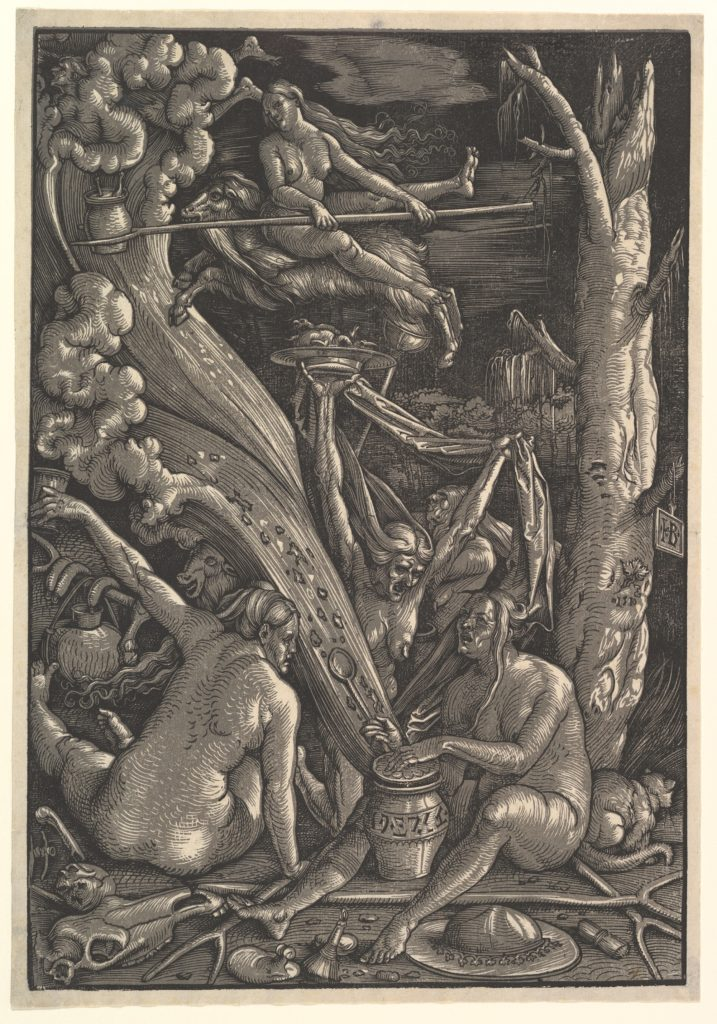Written by Amy Turner

During the 100 years between 1540 and 1640 unprecedented numbers of women within Germany and a minority of men were accused of being witches, tried, accused, tortured and murdered. Records show that 25,000 people died, this number is possibly more as some records may have been lost or undocumented (Roper, 2006).
Many of these women were mothers, sisters, carers and midwifes to the community. These were women who had had spent their lives giving to their communities, so why did their communities turn on them?
This was a time of dramatic religious tension, social change, hardship, but also climatic conditions. All which could have affected people’s views, beliefs, attitudes and behaviour.
1. Religious tension
At the beginning of the 16th century the reformation occurred within Northern Europe. This was the conversion of Catholicism to Protestantism. Towards the end of the 16th century some Catholics responded with the counter-reformation. Each side believed they were on the side of God and accused the opposition of being on the side of the devil, leading to a rise in ‘moral fundamentalism’ (Roper, 2006). This may have led on to the normalisation of persecuting those that were accused of not following the religious ideals and dogmas of the ruling sovereignty.
2. Heinrich Kramer
Heinrich Kramer, a professor of theology was requested by the pope to try to eradicate witchcraft. He wrote a book called the Malleus Maleficarum in 1486 which promoted the persecution of those suspected of witchcraft. This inspired others to publicise and speak on eradicating witches, eventually the persecution of witches was encouraged by popular opinion (Ted-Ed, 2019).
3. Fear, pain and loss.
In the late 16th century to the 1630s temperatures dropped within Europe. The result was agricultural difficulties, which left the shadow of famine and disease.
To add insult to injury, around this time there was also a thirty year war between Catholics and Protestants, leading to villages being ransacked and thousands of deaths (Roper, 2006). Perhaps due to these adverse effects, people may have felt a devil was waging war on them, and blamed those who were the most vulnerable and powerless in society, accusing them of witchcraft.
4. Misogamy
According to Smith (1992) the black plaque caused deaths of family members, this led women, in some cases, to inherit more money and property, thus increasing their power and independence. With new found opportunities many might have engaged more in contraception, abortion and even infanticide.
Some men may have been threatened by this new and independent women and so would openly condemn this behaviour by associating it with witchcraft, punishing those who were childless, outspoken and independent (Smith, 1992).
5. The role of the local people
The average person would have been controlled and encouraged by those in power who would in turn have been influenced by the behaviour of the peasants.
In Oschenfurt the villages had experienced many tragedies and episodes of bad luck. Blaming witchcraft, they put pressure on the local authority to resolve the situation. The result? A girl was tortured and killed and five women were imprisoned. Those in power may have feared an uprising if the will of the people was not appeased (Roper, 2006).
6. The ruling class
Some say the elite wanted more people working so that they could generate more money for themselves. Those women who were infertile, engaged in pre-marital sex, used contraception or abortion were demonised and persecuted as witches. While women who could marry and were fertile were precious commodities (Smith, 1992).
7. The scientific Revolution
The church may well have been threatened by the scientific revolution and to prevent the questioning of the church by the common people, it encouraged blame on the devil and witches within their community for their suffering (Smith, 1992).
8. High child mortality and infertility
Death was common, half of children would not reach adulthood. Social pressures meant that people would wait until they had enough money to get married. Older women meant less children as they are less fertile in their later years of their life in this period of time. Malnutrition and disease also led to infertility. Both these factors would have been exacerbated by the mini-ice age. Women who were fertile and could have children were very precious to the community. If a woman lost a child, the mother or someone who cared for her and the child could be accused of witchcraft (Roper, 2006).
Witchcraft eventually came to an end as popular opinion gradually turned against it.
References
Roper, L., 2006. Witch Craze: Terror and fantasy in Baroque Germany. london: Yale University Press.
Smith, P., 1992. A quantitative evaluation of demographic, gender and social transformation theories of the rise of European witch hunting 1300-1500.. Historical Social research. , 17(4), pp. 99-127.
Ted-Ed, 2019. Ugly History: Witch Hunts – Brian A. Pavlac.. [Online]
Available at: https://www.youtube.com/watch?v=7x5KesH3dzM
[Accessed 6 July 2020].
.
